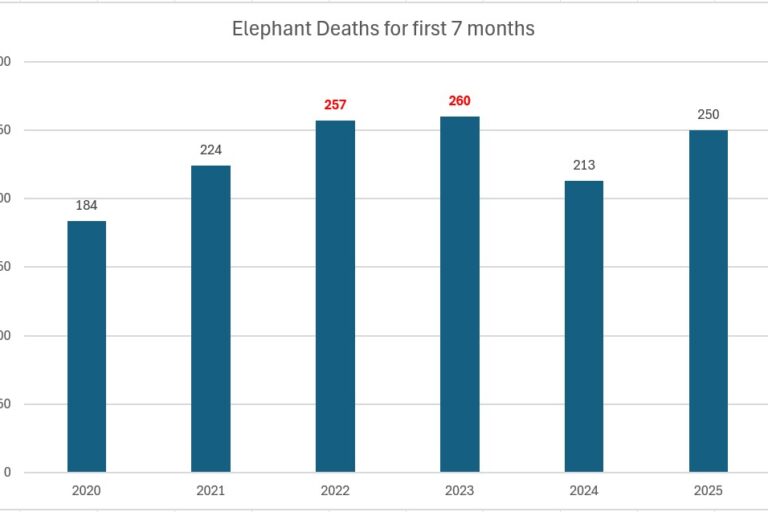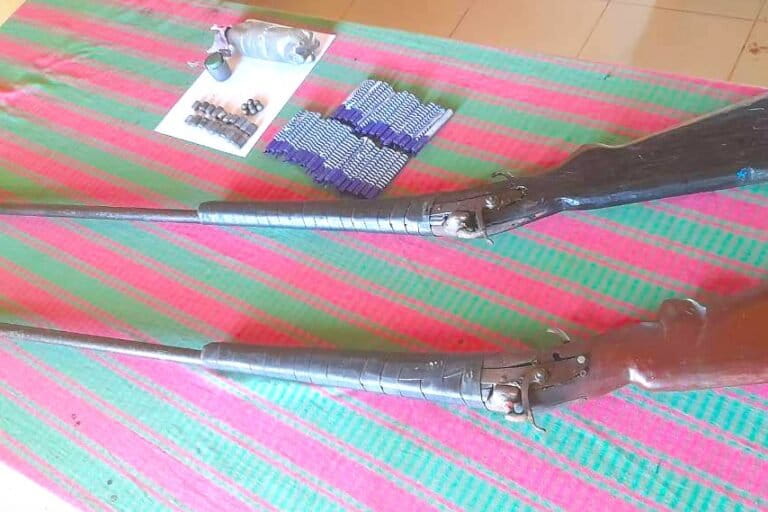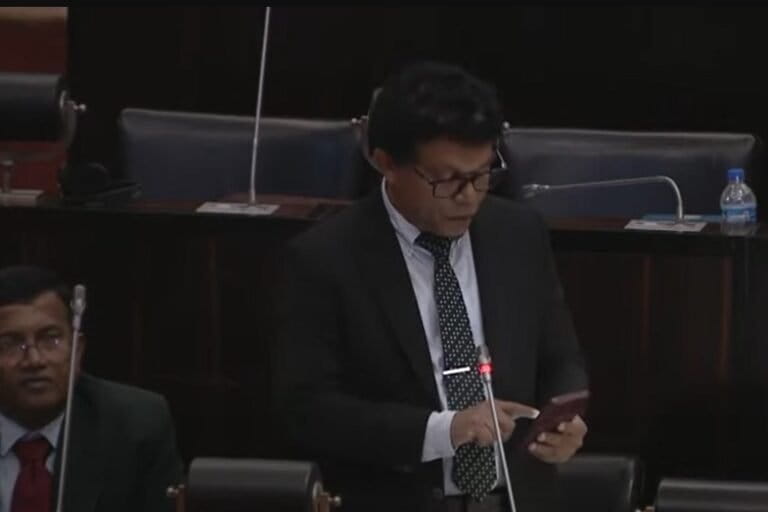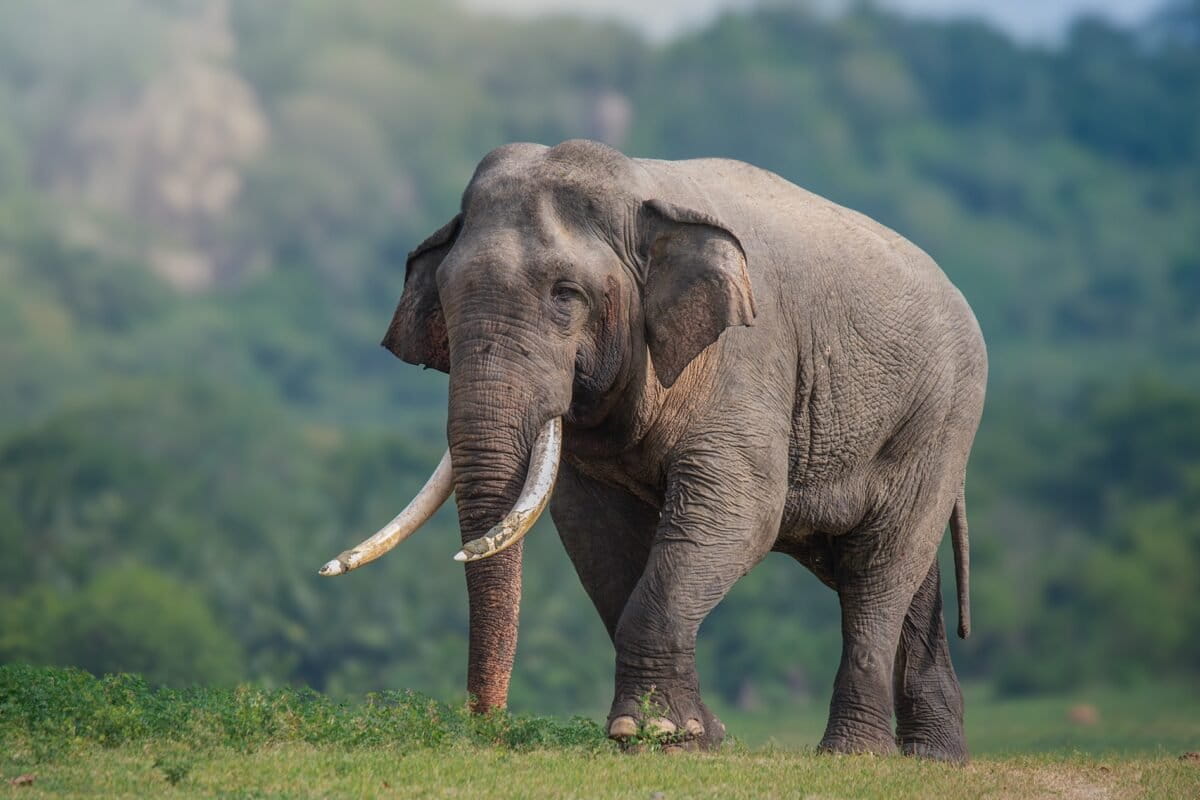- With 238 elephant deaths reported between January and end of July this year, including several iconic tuskers that were found dead, there is increasing concerns about possible organized crime network behind the elephant killings in Sri Lanka.
- The country’s environment minister has filed a complaint with the Criminal Investigations Department (CID) and plans are afoot to deploy the Civil Defence Force to combat wildlife crime and support the severely understaffed Department of Wildlife Conservation (DWC) to address human-elephant conflict.
- Meanwhile, the government’s attempt to distribute more guns among the farming community has angered environmentalists who warn that these guns would increase elephant deaths.
- While various theories are being suggested by some regarding the recent spike in elephant deaths, including ivory poaching, hunting for meat and organized killings, data analysis by Mongabay shows there’s no significant rise, but instead points to a well-meaning media hype, with far greater coverage than before on elephant deaths.
COLOMBO — In recent months, elephants have stolen the spotlight yet again in Sri Lanka’s mainstream and social media. The surge in attention to them began when a series of deadly train collisions killed several elephants, followed by the agonizing death of the iconic tusker Bhahiya, whose final days were made into emotional videos. Bhahiya’s death triggered a wave of media coverage, with fresh reports of elephant deaths stoking public outrage and fueling perceptions of a coordinated killing spree.
Speculation quickly filled the vacuum. Some people claimed organized crime rings were behind these deaths — where it was even touted that snipers were used — to harvest tusks or to eliminate crop raids by the elephants. Adding to the mix, and previously unheard of, was a new breed of environmentalists putting forward the argument that elephants were being killed for bushmeat, although these claims were not backed by evidence.
The uproar reached Sri Lanka’s parliament and resulted in the minister of environment, Dammika Patabendi, giving multiple statements, both in the parliament and to the media. He also visited elephants wounded by gunfire and said that possibly two “organized waves” of killings had occurred this year. He urged the island country’s Criminal Investigation Department (CID) to investigate, insisting that farmers were not responsible for elephant killings but that framing these incidents was part of a broader conspiracy. Meanwhile, the director general of the Department of Wildlife Conservation (DWC), Sri Lanka’s state agency mandated to protect the country’s flora and fauna, also announced a separate inquiry.

A spike or just media hype?
Despite the headlines and social media hype, the analysis of data paints a different picture. A Mongabay analysis of DWC records from the past five years shows the situation to be different. By July end this year, 245 elephant deaths had been recorded.
In comparison, the same period in 2022 and 2023 saw 257 and 260 deaths being recorded, respectively — both higher than the total for 2025 — debunking an unusual spike of elephant deaths as claimed by some.
Wildlife photographer and elephant enthusiast Pathum Bandara, who tracks herds in Galgamuwa in the island’s northwest, where human-elephant conflict (HEC) is high, says there’s been no significant spike. “There’s a lot of misinformation in both mainstream and social media. On the ground, we don’t see a dramatic spike, though the toll remains high. Sri Lanka’s elephant deaths have remained high in recent years,” Bandara says, pointing out that elephant deaths that earlier went unnoticed are now drawing a lot of public attention which creates the sense of a spike in deaths.
Sri Lankans are particularly concerned about the future of tuskers as several iconic tuskers have been killed in recent years, says Bandara. Tuskers, he adds, may often get targeted because of their habit of using tusks to bypass electric fences to enter cultivated lands, making them more likely to come into conflict with people.

Government inaction questioned
Sri Lankan environmentalists have continued to charge the government of condoning wildlife killings, pointing to a recent remark by agriculture minister Kuragamage Don Lalkantha, who defended farmers’ right to use any means to protect crops from wild animals. Speaking to Mongabay, Lalkantha clarifies that his comments referred to crop-damaging species such as monkeys, wild boar and peacocks and it was not meant as a call to take on the elephants. But environmentalists are unconvinced and warn that such rhetoric could encourage farmers to shoot elephants, too. “Such statements can fuel vigilante killings,” says elephant researcher and activist Sameera Weerathunga.
Discussing the year-on-year variations in elephant deaths, director general of the Department of Wildlife Conservation, Ranjan Marasinghe, says that weather patterns also influence the intensity of HEC. “During prolonged droughts, elephants are more likely to raid crops as food becomes scarce in their natural habitats,” he tells Mongabay.
In 2024, elephant deaths were lower than in 2023, which saw a record high of more than 400 fatalities. Marasinghe predicts that, while this year’s toll may surpass 2024’s figures, it is unlikely to reach the 2023 peak.

From conspiracy theories to misinformation
The environment minister, in his various statements, has also referred to a possible pattern of elephants being deliberately shot in the legs, enabling social media to capture footage of limping elephants. He has claimed that such visuals could be used to tarnish the image of the government, hinting at the possibility of deliberate shooting of elephants.
But Weerathunga attributes these injuries largely to trap guns, set for smaller game like wild boar and deer, but often injure elephants below the knee level when triggered. He warns that statements without proper inquiry would politicize the deaths of elephants and would do more harm. Spreading such misinformation would distract authorities from taking corrective actions for Sri Lanka’s long-running HEC, which roughly stands at around 400 elephants and 150 people annually.
In 2020, a presidential task force of experts led by Prithviraj Fernando and Sumith Pilapitiya produced a science-based HEC strategy, which conservationists agree as the most viable way forward.
The coordinator of the National Red List’s fauna section and elephant researcher Devaka Weerakoon adds that misinformation has always plagued the issue of human-elephant conflict. “There are times that the media in Sri Lanka are not responsible in reporting, and even some of the experts that media tend to quote sometimes misrepresent the situation, shaping a negative public perception of conflict-causing animals,” says Weerakoon, adding that social media amplification further complicates the issue.

Military solutions and fence failures
There are also proposals to deploy the Civil Defence Force (CDF) to tackle HEC, but experts say a similar effort in the past failed when CDF officers were tasked with maintaining electric fences. “Without proper training and guidance, they won’t understand the problem,” warns Weerakoon. “This isn’t an issue that can be solved with brute force, it requires site-specific, science-based understating and solution-seeking,” he tells Mongabay.
Meanwhile, the DWC has hired around 3,000 staff members to maintain electric fences. Weerakoon says that while well-placed electric fences are our best defense against HEC, most are poorly located, badly designed, and inadequately maintained — one of key reasons for the worsening conflict. “They’ve stuck to a failed strategy for years, ignoring evidence, so trying to maintain such poorly located and badly designed fences would not solve the issue,” he says.

Declining tolerance
Sarath Kotagama, emeritus professor at Sri Lanka’s University of Colombo and former director general of the DWC, says tolerance toward elephants is eroding across generations in Sri Lanka. “Those over 50 [years old] grew up with some tolerance to elephants, but as agriculture became highly commercialized, crop losses are less tolerated by the younger farmers, leading to more violent retaliation,” he says.
Sri Lanka also needs to reassess the human elephant co-existence model, notes Kotagama.
Meanwhile, Sri Lanka’s Department of Agriculture is considering issuing more firearms to farmers for crop protection. While the minister claims that farmers often help wounded elephants, Weerathunga warns that younger farmers — especially those illegally encroaching on forest land — may be quicker to shoot. “Once an elephant is killed, the fear is gone, and that can lead to more shootings,” he says.
“While the focus remains on elephants being shot, hundreds of other wild animals are silently falling victim to poachers,” Weerathunga tells Mongabay.
“An increase in firearms inevitably leads to more hunting, and arming more people will only intensify the conflict,” he warns. He adds that unauthorized weapons should be confiscated, and ground-level intelligence should be employed to apprehend those who set up electric fences connected to the main grid, as well as those who deploy bait-laden with explosive maker, locally known as hakka patas, or jaw bombs, to reduce elephant fatalities.
Banner image: Following a series of deaths of iconic tuskers, Sri Lankans are especially concerned about a magnificent elephant named Kawanthissa, with people calling for military protection for him, as Kawanthissa is known to roam through densely populated areas. Image by Pathum Bandara.
